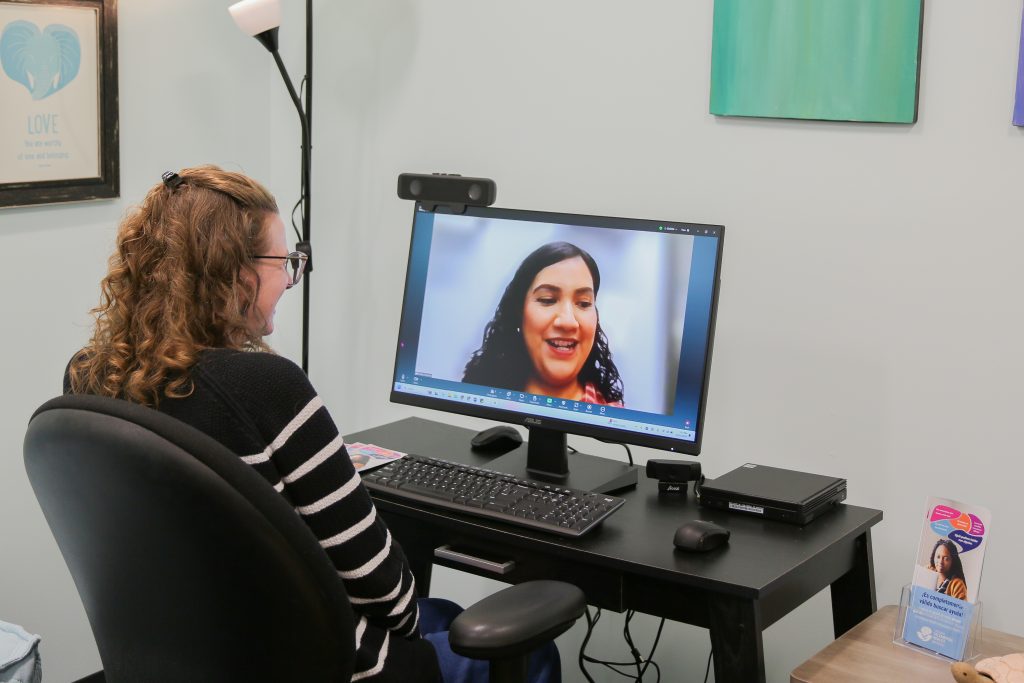Telehealth has helped connect countless individuals with mental health services. While virtual therapy is convenient and accessible for many patients, providers should consider that some people may be apprehensive due to limited experience with technology, concerns around confidentiality, or the lack of the personal connection that in-person sessions can provide.
For Mental Health Awareness Month, we asked clinical supervisors with the Virginia Telemental Health Initiative (VTMHI) to provide best practices related to delivering virtual mental care.
In this post, we’ll share their tips and explore how these practices can help create a safe, supportive, and engaging space for patients in virtual therapy.
Encourage patients to get comfortable and find a dedicated space
Even though virtual therapy sessions are often conducted in an environment that patients are familiar with, it can be a challenge for some to create a mental separation from their life and therapy.
Encouraging patients to find a comfortable, dedicated space in their home for virtual sessions can remind them that they are in a private, safe space where they can open up emotionally.
“I tell my patients to find a quiet room with good lighting, test their technology beforehand, and have a glass of water nearby,” said Karena Heyward, PhD, LPC, LMFT, ACS. “I also reassure [patients] that it’s normal to feel nervous. Before each session, encourage patients to take a few minutes to bring awareness to the present moment by finding something in their space that is comforting, listening to a calming song, stretching, or engaging in anything that helps them to shake that nervous energy just a bit.”
Asking patients about their comfort level with technology and reassuring them that their information and sessions are private and secure will also help them feel more at ease and establish trust with their provider.
Minimize distractions and keep patients engaged
To get the most out of each session, remind patients that they should treat it as though they are sitting in your office, away from everyday distractions.
“Patients should treat the session like an in-person appointment to get the most from virtual therapy. I encourage my patients to arrive early, settle in, and minimize distractions by silencing phones and computer notifications,” said Heyward.
To stay engaged in the therapeutic process both during and between sessions, consider incorporating simple practices that reinforce progress and insight.
“Journaling between sessions or engaging in agreed-upon “homework activities” can deepen the work, and keeping a notebook nearby helps capture important thoughts. Reviewing these notes periodically may be helpful. Some patients choose to keep voice notes which can be equally as supportive,” said Heyward.
Make your virtual space warm and inviting
During virtual therapy sessions, help patients feel as though they are in the same room as you. Consider how you can use your environment to create a calming space for your patient, even if it’s through a computer screen.
“I like to have pictures of my pets or trinkets that help the patients get to know me through my surroundings. I have plants and lights behind me so they get a sense of what the ambiance would be if they were sitting with me in person, said Luisi Cano, LPC, LSATP.
Keeping your camera at eye level, staying attuned to nonverbal cues and using verbal affirmation often during virtual therapy will communicate to patients that you are present, engaged, and attentive.
While research has shown that virtual therapy has the same benefits and outcomes as seeing someone in person, teletherapy can feel intimidating for patients who are new to it. Encouraging patients to find a comfortable and consistent space in their home, reminding them to come to your session as though it’s in-person, and creating an inviting space are a few practices to ensure patients feel safe, supported and at ease during virtual therapy sessions.
Please note, the recommendations offered here reflect the views of the subject matter expert(s) featured in this post as shaped by their experience. These recommendations are not intended to and do not define the standard of care for the virtual mental health services of any health professional, within the Commonwealth or elsewhere. Healthcare professionals exercise their own independent clinical judgment in the care of each patient, and no set of recommendations, however carefully developed and however well-expressed, can establish what a reasonably prudent practitioner would do in a given case. The statements, actions, and decisions of healthcare professionals vary not only with the individual patient, but over time, so reliance upon the ideas articulated here in attempting to identify the standard of care is misplaced.

